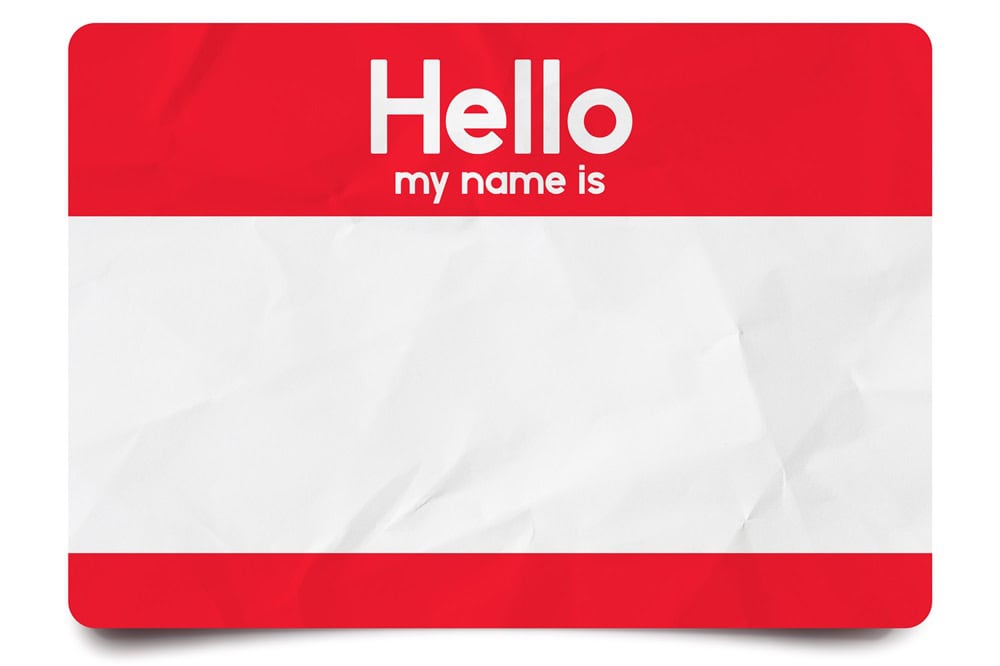
The Good Newsletter – June 2025
Profile Media has taken out two big wins so far in 2025, and we couldn’t be prouder.
May 2024
Hi! This is Drew’s Letter, a monthly summary of interesting reads, PR advice and recommendations from the mind of our Strategic Communications Director Andrew Williams.

Attention spans are dead and short-form video is all the rage – except when they aren’t and it isn’t

It’s commonly accepted that attention spans are getting shorter.
You know, the kids with their TikToks and their reels and their inability to concentrate.
Lots of video creators & content experts took this trend to mean that your videos had to get shorter, because you only have a limited time to capture someone’s attention.
That’s still true, to a degree. But capturing all of someone’s attention and having someone’s attention are two very different things – and there remains, as always, a place for both.
Two videos have notably gone viral on Youtube this year that, if not disproving the accepted wisdom on attention spans entirely, should reframe how we think about the content we create – and whether depth and length are the vices we once thought.
Firstly, this video on plagiarism from the creator Hbomberguy, which has had 21 million views and was a viral sensation in January.
And last week, this video on a failed Star Wars hotel/roleplaying experience that has just crossed 6 million views and I expect will probably comfortably reach 10 million down the line. Both videos are from professional YouTube video creators that have over a million followers each, but these individual videos have done particularly well, though both creators routinely get millions of views on YouTube.
They’re also roughly four hours long. If you clicked either of those links before getting this far, you may have reasonably intoned ‘four hours! I’m not watching that.’ And that’s fair enough – but millions have. Why?
I won’t go into the content of both videos now, other than to say they are both really excellent. The point I wanted to look at is how they both challenge the prevailing narrative about the current generation, attention spans and the way we consume content.
News stories on the videos (and they have both resulted in mainstream media coverage) usually have comments along the lines of ‘who would possibly have time to watch four hours of this?’. But that’s asking the wrong question, because it assumes audiences are solely watching the video. I watched/listened to Jenny Nicholson’s video while tackling the monumental task of cleaning my disaster zone of a study. She had my attention, but I wasn’t staring enraptured at the screen. Not all content is meant to be consumed the same way, and that’s fine.
What they have in common is that they are both high-effort, not high-budget. They are both incredibly well-researched and presented, but neither of them have particularly high production values. What you can see on-screen is the time, effort and authenticity of the creator – and that’s time and effort that is hugely appreciated by the audience.
In addition, the subjects might be niche – but the messages are universal. One is about plagiarism in YouTube and content creation, which you might not think you care about, but as A.I. continually risks infringing on copyright and intellectual property, is an issue that is only going to become more fraught. The second is about a defunct themed hotel, essentially, but ends up going to the heart of issues like branding, cost-cutting and capitalism. They are both excellent pieces of journalism, revealing something about our world at large by focusing on one specific part of it.
Surprisingly, they’re both the creator’s first post on YouTube in quite some time. While both creators are active on other digital platforms, HBomberguy’s last video was in November 2022. Weirdly enough, Jenny Nicholson’s was also November 2022. But their audiences are so loyal and their content is so well-made, it didn’t matter.
(It should also be noted that they both contain some element of another secret sauce to virality – calling out other creators for being inauthentic or misleading. Sure, we value well-reasoned criticisms and good journalism, but we also don’t mind a scintilla of messy drama thrown in to the mix.)
So what can we learn from these unusual content creation success stories?
Firstly, it’s important to create content that is for the audience. You want to be adding some sort of value, not just talking about yourself all the time, a trap too many companies routinely fall into.
Secondly, depth and breadth are not a vice. If it fits within your content creation capabilities, go into detail! You probably won’t go viral, but people will recognise and appreciate effort even if they don’t ‘like’ it. As long as it suits the material and the platform, it’ll work.
Thirdly, putting a human face and a real person front and centre in your work is a good thing. It creates personal connection with the audience.
Lastly, don’t take everything you read as ‘the way of the future’ as gospel. Trends are, by their nature, not eternal. Authenticity is so much more valuable, in the long run, than virality.
The Game of the Name, or Why You Should Be a Moniker Yeller

When I began doing a television streaming review segment with the radio presenter Steve Mills on 6PR Afternoons in 2022, he started calling me ‘The King of TV Streaming’, a demonstrably false title I gladly accepted.
Later in the year, it occurred to me that The King of TV Streaming had the same cadence as the song ‘The King of Wishful Thinking’, an excellent tune by the band Go West from the Pretty Woman soundtrack.
One off-hand comment to 6PR’s resident muso and newsreader extraordinaire John Nicholls later, and soon the moniker had its own theme song.
Two years later, with Steve having moved to breakfast and the wonderful Julie-anne Sprague now on Afternoons, the theme song – and the moniker – hasn’t changed.
(You haven’t known accidental hubris until you realise you’ve been absent-mindedly singing your own theme song while shopping for groceries.)
When doing my regular segment the other week, Julie-anne mentioned that she’d just spoken to Shannon Lush, who is known as ‘The Queen of Clean’. And it got me thinking about the value of a catchy moniker.
I would argue that the percentage of Australians who know the name Scott Pape used to be substantially lower than the percentage who know The Barefoot Investor, such a successful branding exercise was that moniker. Over time, he has brought those two percentages closer together.
Similarly, before Jamie Oliver was Jamie Oliver, he was the Naked Chef. Now he’s largely left that title behind, but it launched him into the stratosphere.
Most of these titles are untrue – Jamie was rarely naked, Scott was rarely barefoot, and Shannon and I don’t preside over a monarchy of anything. But what they do achieve is clearly getting across what these people were about in a few words.
If you’re looking to build a personal brand and own a particular piece of the thought leadership pie, a catchy title is worth considering. It’s proved excellent in the past. Want to become a media expert who helps people make progress with their digestive health? Be the Gut Guru. Want to become the world’s leading expert on reptiles? You can be the Lizard Wizard.
It might seem silly at first. Much like calling yourself an expert – even if you are – can seem silly at first. But in the PR & media worlds, where time is of the essence in explaining a story to a journalist, this shorthand is very useful – as long as it’s original. I’ve received a lot of press releases claiming an app is going to be the ‘Canva of micro-influencer business development’ and it induces an eye roll every time. Don’t be a facsimile – be the original article.
Obviously, this approach doesn’t suit every brand. If you’re a serious organisation handling serious topics, don’t call yourself the Duke of Disenfranchisement or something. But for those looking to build their personal brand and get known quickly within the media – a catchy moniker is an oft-overlooked tool that can be enormously beneficial.

Blue Lights
As a semi-professional television reviewer, I like coming across TV shows that I would consider almost can’t-miss recommendations. Blue Lights, on SBS On Demand, is one of those. A gritty drama about rookie police officers in Belfast, it’s got the benefits of being a) free to watch(albeit with ads) b) both entertaining and worthwhile and c) returning an almost 100% RSR (Recommendation Success Rate).
Furiosa
I know Mad Max is a national institution, but I just do not enjoy this particular film series, particularly in its modern incarnation, though I wish it every success for the sake of the Australian film industry. The Fury Road prequel Furiosa is different enough to its predecessor that I enjoyed it slightly more, but it’s still the same problem – great imagery, half-baked narrative.

Pinpoint
Our digital game of the month this month is actually on LinkedIn, of all places. As a fan of TV shows like Only Connect and a creator of my own ‘spot the connection’ video series on TikTok, I am very much enjoying Pinpoint on LinkedIn, which gives you five random clues with a secret connection – the faster you work out the connection, the better.
As the quicker, less mind-melting sibling of the NYT Connections game, it’s an easy one to add to the rotation!
Monthly newsletters delivered straight to your inbox!

Profile Media has taken out two big wins so far in 2025, and we couldn’t be prouder.

In our workplace, we believe staying ahead in the dynamic world of public relations requires more than just industry knowledge. It demands continuous learning, passion, and genuine curiosity.
That’s why our team actively participates in conferences throughout the year, often chosen to align with individual interests and expertise. This
Let’s talk about how you can have a bigger impact
Leave your details below and let’s chat about your goals, and how we could help achieve them.
Contact
Phone: 1300 123 110
Email: info@profilemedia.com.au

Profile Media Communications
Navigation